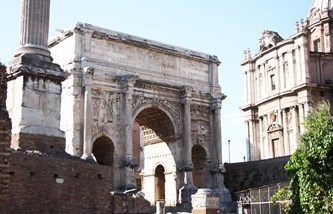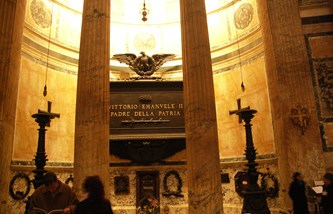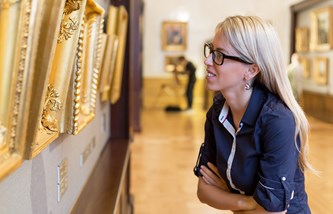Tours
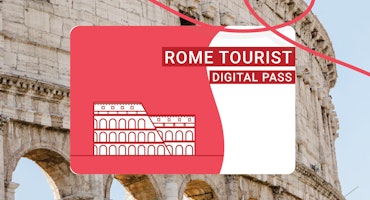
Rome Tourist Card
Rome Tourist Card
Snap up the Rome Tourist Card and you'll get everything you need to explore Rome's top highlights including Colosseum, Palatine Hill, Roman Forum and Hop on/off bus. You can even choose the order you see things in.
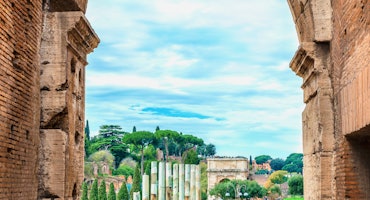
Colosseum, Roman Forum & Palatine Hill: Priority Entrance
Colosseum, Roman Forum & Palatine Hill: Priority Entrance
Skip the long lines at the Colosseum with this priority-entrance ticket. This ticket will let you bypass the crowds. And after exploring the Colosseum you can head to the area of the Roman Forum and the Palatine Hill.

Vatican Museums & Sistine Chapel: Skip The Line
Vatican Museums & Sistine Chapel: Skip The Line
This ticket will make you save stress and time by allowing you to get priority entrance and skip the line. Visit the the countless masterpieces by Michelangelo, Raphael, Caravaggio, Tiziano and the Sistine chapel.
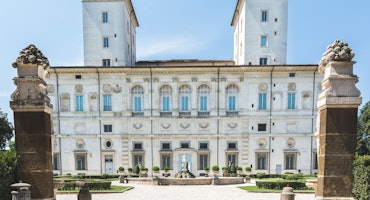
Borghese Gallery: Fast Track
Borghese Gallery: Fast Track
Galleria Borghese is located in the villa of the park Villa Borghese. Admire the architecture and furnishings of this beautiful villa. It is a museum full of art from the Renaissance. The collection includes several sculptures and paintings. Because of limited capacity get tickets for this museum weeks in advance.
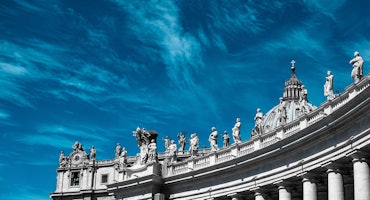
St. Peter’s Basilica: Dome Climb with Guide
St. Peter’s Basilica: Dome Climb with Guide
Get the most out of your visit to St. Peters with a guided tour to climb the basilica’s dome designed by Michelangelo and admire one of the stunning view. After the tour, you can explore the the basilica at your own pace.
The Palatine Hill
Whoever lives in a “palace” owns a grand residence indeed. Did you know that the very word that now indicates the residences of authorities, dignitaries and multinational holdings, has its origin from the name of a hill? Of course, we’re not talking any hill, but the Palatine Hill, which was the location of the very first settlement of the city. Later on, the known world will witness the rise of a kingdom, then a powerful republic and, finally the greatest empire of ancient times. Let’s take a closer look at those walls, columns and sometimes surprisingly well preserved artwork, just as if, as common citizens, we were admitted, after more than two thousand years, to the “Palatium”, the emperor’s residence.
The most prominent personalities, most notably the emperors, built their residences on this hill, the Palatine. The name itself originates from the deity Pales, which was adored in the early Roman civilization, and celebrated during the Feast of Parilia, held on the 21st of April, which is traditionally considered the day of the city’s foundation. After the empire declined, looting and neglect that have lasted up to the Renaissance, have unfortunately strongly left their mark. But, when we arrive at this site, we can still look around, and visit the remains of what was probably the most monumental residential area of antiquity.

The Site Today
The Palatine is one of the seven hills included in the original city’s plan. Next to the Roman Forum, the Capitoline Hill, the Circus Maximus and the Colosseum, it is located in the very middle of ancient Rome’s city, political and business life. It stands at approximately 50 meters above the ground, and, today, with its peaceful atmosphere, rich in history, but surrounded by nature, it feels like a rare oasis in the midst of one of the busiest capitals of Europe.
Walking on the southern and western slopes of the hill, you’ll travel across the Severian Arches, passing by the residences of the emperors, reaching the site where Romulus founded the city and where Augustus, the first Roman emperor, lived all his life. From here, you can continue among remains of temples, residences and warehouses, up to the entrance of the Roman Forum. It won’t be just a sightseeing experience, but also an unexpected “nature walk”, as the area is beautifully immersed in bushes and trees. But, what will strike you the most, is that the area is incredibly quiet. And yet, we’re just a few meters away from bustling streets. It’s as if an invisible hand has created a natural boundary between a modern city and a site that should be kept quiet, so that you can still hear the sounds of the past, present and clear.
Here’s what you will be able to visit: the remains of the residences of the Emperors Augustus and Tiberius, the house of Livia Augusta, the Nero’s residences and underground halls, the Farnese gardens, a museum, the secret passage built by the emperor Domitian, which has only recently been opened to the public after years of archaeological excavations, and the area of the ancient hut of Romulus and Remus (the city’s founders).
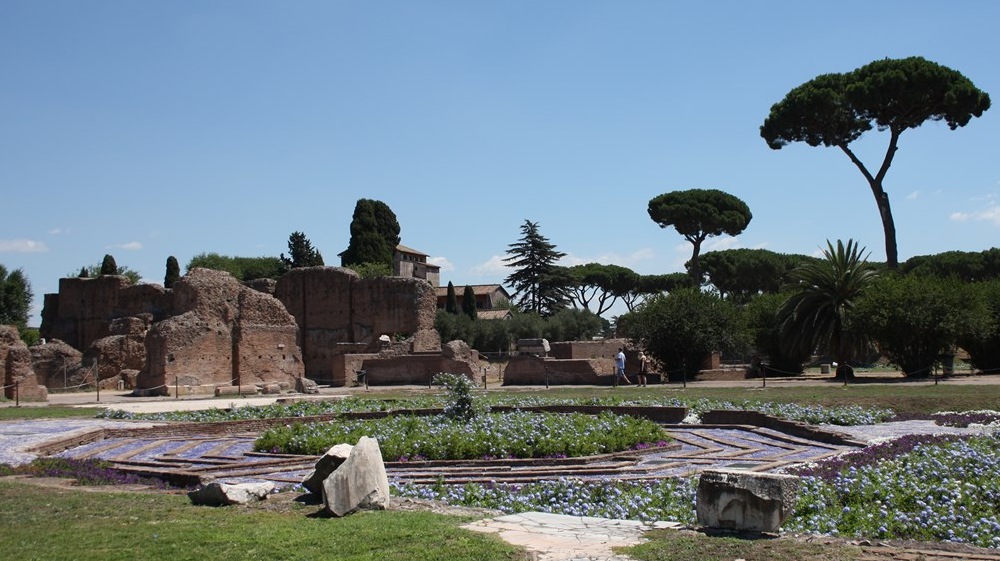
The House of Augustus (Domus Augustea)
The Emperor Octavianus Augustus was born on this hill in 63 BC and lived here all his life. Because of this, the Palatine has been elected residential area for the emperors, up to its decline in the fifth century AD. The house, which featured a private and a public area, was finely decorated with mosaic floors and wall frescoes. Only recently, some of the private rooms have been opened to the public. Here, you will be able to admire, among others, the “room of the masks”, with paintings depicting a theatrical scene rich in detail. Even in the “public” area there are still some decorations that are quite well preserved and are a precious example of the finest Roman painting style.
The House of Livia Augusta
According to archaeological evidence, this house belonged to a noble woman, who became Augustus’ wife and mother of Tiberius. Her direct descent includes five emperors, including Claudio, Caligola and Nero. The residence was discovered in the nineteenth century and it features a reception hall, a square atrium and various rooms. Normally, Roman houses had a central plan, with the rooms opening symmetrically to a wide space in the middle. Livia’s house features notable paintings, still well preserved.
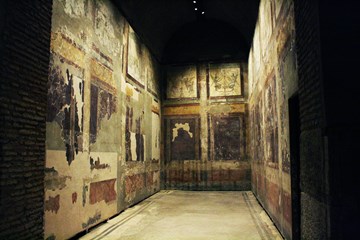
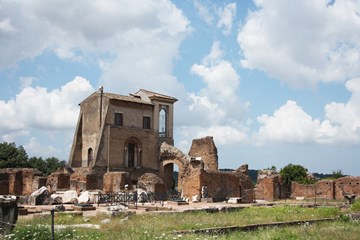
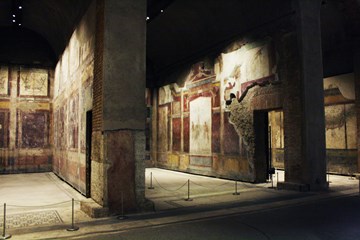
Nero: The Domus Transitoria and the Remains of the Domus Aurea
Before living in his famous Domus Aurea (literally “the Golden House”), Nero used to live in this house, which was almost completely destroyed by the fire in 64 AD. Of the ancient splendor, all that is left are some remarkable clues of the type of posh residence the emperor designed for himself. There is a triclinium (the Roman dining room) surrounded by multi-colored marble pillars and columns in porphyry, frescoes, stucco decorations and marble floors. Some of the decorations which were recovered during excavations are now visible in the Palatine Museum. Later, Nero built his famous palace, called “Domus Aurea”. The palace was actually a huge complex of various buildings, including gardens and a thermal complex, covered in gold and colored marble.
Recent studies (2009) have confirmed that, at the top of the hill, the palace featured a vast banqueting hall which was mounted on a rotating pillar, to offer the guests a 360° revolving view of the city. The successors of the evil emperor, trying to erase any trace of his reign, completely looted the buildings, destroying and burying the remains of the palace. During the Renaissance, on the occasion of unexpected archaeological findings, some known artists such as Raffaello and Pinturicchio, whom were fond of antique art, descended into some of the buried rooms to take inspiration from the complicated adornments and decorative patterns depicted on the walls of those caves. In Italian “cave” translates as “grotta”: the “grotesque” style, which reinterprets the ancient Roman decorations in an imaginative and playful way, and comes from the “sighteseeing adventures” of those great sixteenth century artists.
The Farnese Gardens
This palace and gardens were designed by the architect Jacopo Vignola, when the influential Farnese family took possession of some of the land on the Palatine Hill. Between 1500 and 1600 they worked toward the creation of a magical place, their aim being celebrate the glory of the past Roman civilization and, at the same time, the power of the family. It is a site clearly devoted to beauty and art, immersed in nature. Terraces, fountains, niches, monumental stairs and gardens live side by side with the rest of the imperial residences.
Nero’s Cryptoporticus
One of the most interesting areas of the Palatine is an underground tunnel called “cryptoporticus”, near the remains of the house of Tiberius. Built by Nero, it was used to connect the Imperial residence with the other public buildings. At the same time, it was a place that offered relief from the summer heat. The tunnel was covered in mosaics and fine stucco decorations. The ones in the tunnels are copies, as the original ones are preserved in the Palatine Museum.
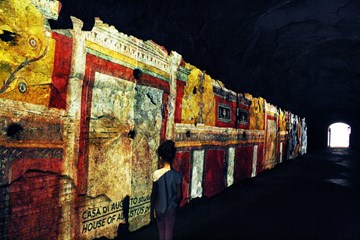
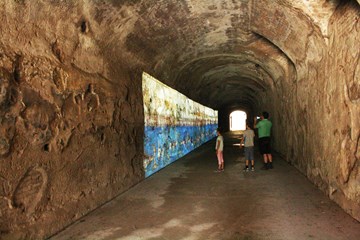
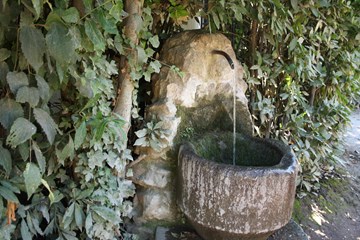
The Secret Passage of the Emperor Domitian
Emperor Titus Flavius Domitian did not just build a citadel on the Palatine Hill. He also constructed a secret passageway, to be able to reach the forum in complete safety, together with his imperial guards. It connected the hill and the Roman Forum. The secret passage of Emperor Domitian was so large and spacious that even horses could fit in and seamlessly walk along the hallway.
The passage was first discovered in 1900. However, only a small portion of the corridor was exposed during this time. Further excavations have unearthed the entire underground corridor. To help preserve this historical jewel, a restoration project was carried out in 2009. The project was completed six years later and finally, in October 2015, the site was opened to the public.
The Hut of Romulus and Remus
When coming to Rome, you will probably pay a visit to the Capitoline Museums, which lie at the top of the Capitoline Hill, not far from here, at the other side of the Roman Forum. Inside the museums, there is the bronze statue of a she-wolf, called la Lupa Capitolina. Legend has it that the baby twin brothers Romulus and Remus' fate was to be slaughtered by order of their uncle Numitore, king of a city called Alba Longa, who feared that, once they reached adulthood, the two may claim his throne. Romulus and Remus were believed to be the sons of the god Mars (the deity of war) and the Vestal priestess Rea Silva. But the man that had to be the perpetrator of such horrible crime, took pity on them, and abandoned them in a basket on waters of the river Tiber. They were eventually rescued by a she-wolf (an animal dear to Mars), who took care of them and fed them, until they were found and raised by a couple who became their foster parents.
Archaeological findings suggest that the side of the hill was actually inhabited since approximately 1000 BC. The site was safe and secure because it overlooked the Tiber and it was possible to check for incursions from people of other towns nearby. In 2007, through relentless excavation works in the area of the house of Augustus, a cave richly decorated with multi-colored mosaics has been discovered, 16 meters below the ground. This site is believed to be the Lupercalia, the actual cave where the she-wolf took care of the two baby twins and, because of that, became a site of worship. This is supported by various accounts and evidence. In this still mysterious place, after more than 3,000 years, legend seems to finally meet history.
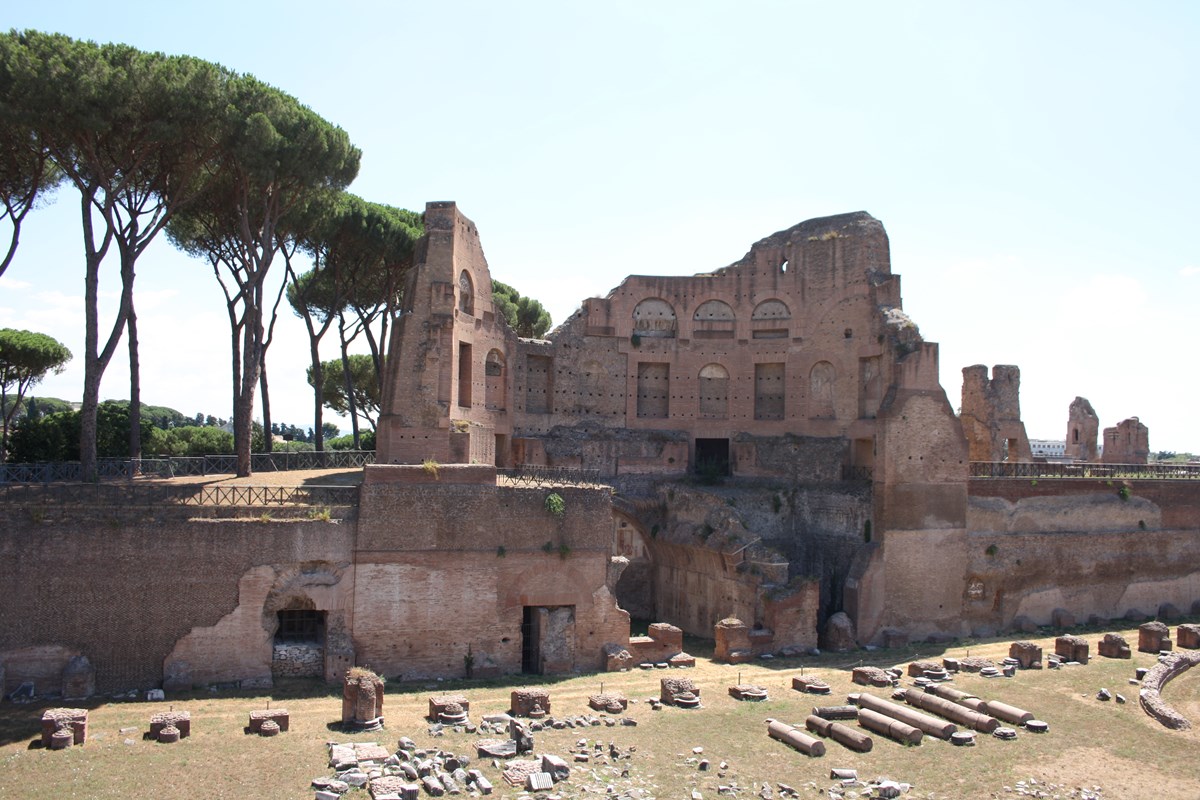
The Palatine Museum
If you want to learn even more about this incredibly rich site, do pay a visit to the Palatine Museum, which has recently been refurbished and features state-of-the-art multimedia installations. The museum was originally funded in the '30s and since then has been used to preserve the large number of statues and decorations which were found during the excavations on the hill.
How To Get to the Palatine Hill
The best way to get to the Palatine Hill is via the Metro (the subway) Line B and disembark at the stop called Circo Massimo. From here, you will walk past the famous Circus Maximus. Then, just keep walking towards the Colosseum. The Palatine is located on the left hand side, before the Colosseum.
- Tip 1: The Palatine Hill is situated opposite the Colosseum and adjacent to the Roman Forum.
- Tip 2: If you want to visit the Roman Forum, the Colosseum and the Palatine Hill, you can buy a combo ticket which will give you access to these three historical sites.
- Tip 3: There are no restaurants, cafes or shops on the Palatine Hill. It is best to bring a bottle of water and snacks with you, especially if you are travelling with kids. Below the hill, there are public fountains with drinkable water that you can use to refill your bottles.
Entrance tickets
The combo ticket which includes the Colosseum and the Roman Forum as well, can be bought at the gates or by e-ticket. Although the queue is slightly shorter than the one at the Colosseum entrance, we still recommend to get your tickets upfront.
FAQ
Where is the Palatine Hill?
The Palatine Hill is located in the city’s center, and it’s one of the seven hills included in the original city’s plan. It was the Emperors’ favorite location to build their private residences.
What can I visit on the Palatine Hill?
On the Palatine, you can visit the remains of the residences of many emperors, including Augustus, Tiberius and Nero. You can access underground tunnels, such as Domitian’s secret passage, the Farnese gardens, a museum and the area of the ancient hut of Romulus and Remus (the city’s founders).
Is the Palatine Hill close to the Colosseum and the Roman Forum?
Yes, the Palatine Hill is situated in the historical center, nearby the Colosseum and the Roman Forum.
Where can I buy tickets for the Palatine Hill?
You can buy a combi ticket which also includes entrance to the Colosseum and the Roman Forum. To avoid long queues, we suggest that you buy your tickets upfront. You can find interesting offers online.
What is Nero’s Cryptoporticus?
It’s an underground tunnel built by Nero on the Palatine Hill. It was used to connect the Imperial residence with the Forum’s public buildings. The tunnel is covered in mosaics and fine stucco.
What is a domus?
A domus was a large house owned by a member of the ancient Rome’s aristocracy. You can visit the remais of the Emperor’s Augustus domus, and some rooms of the house of the noblewoman Livia Augusta on the Palatine Hill.
